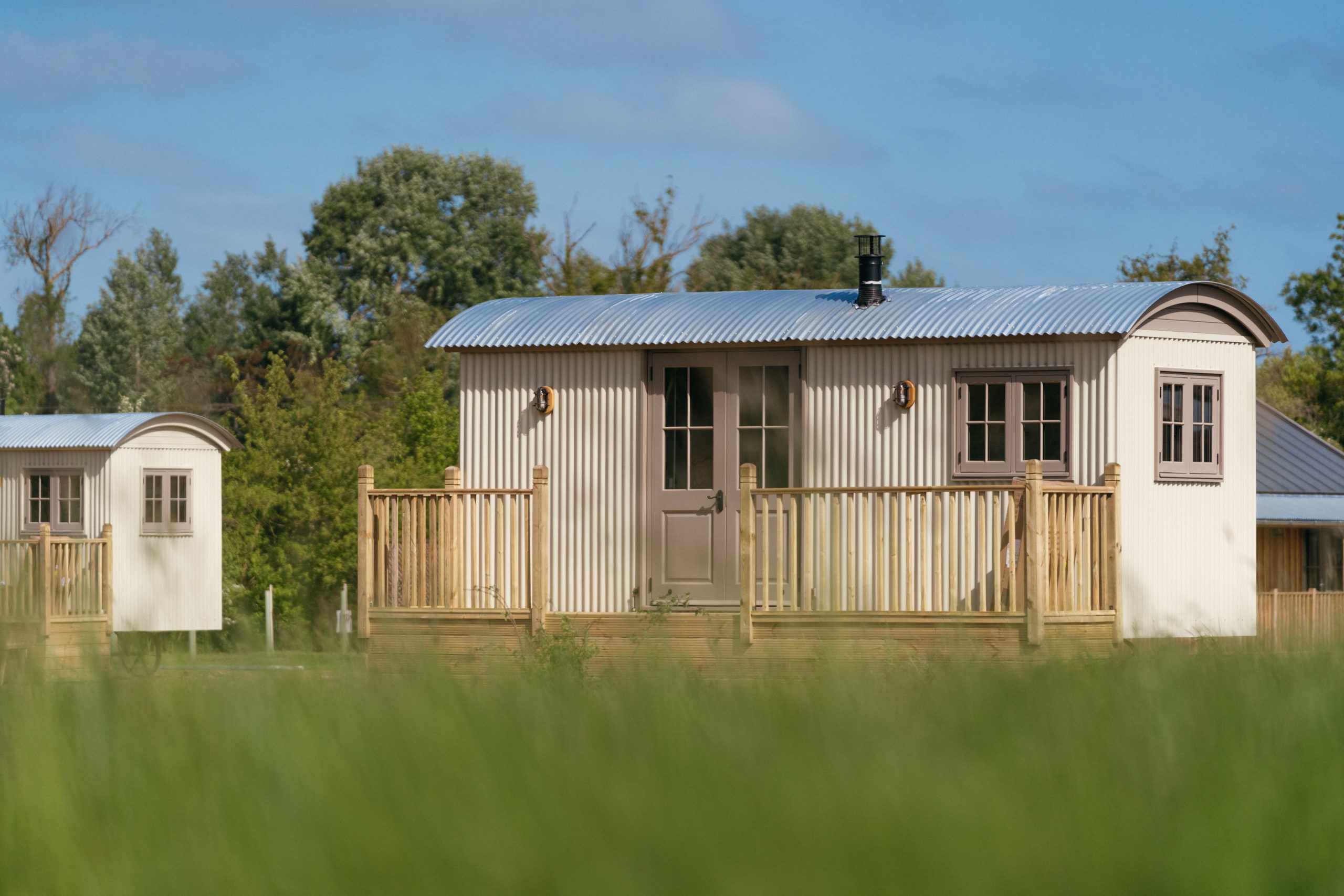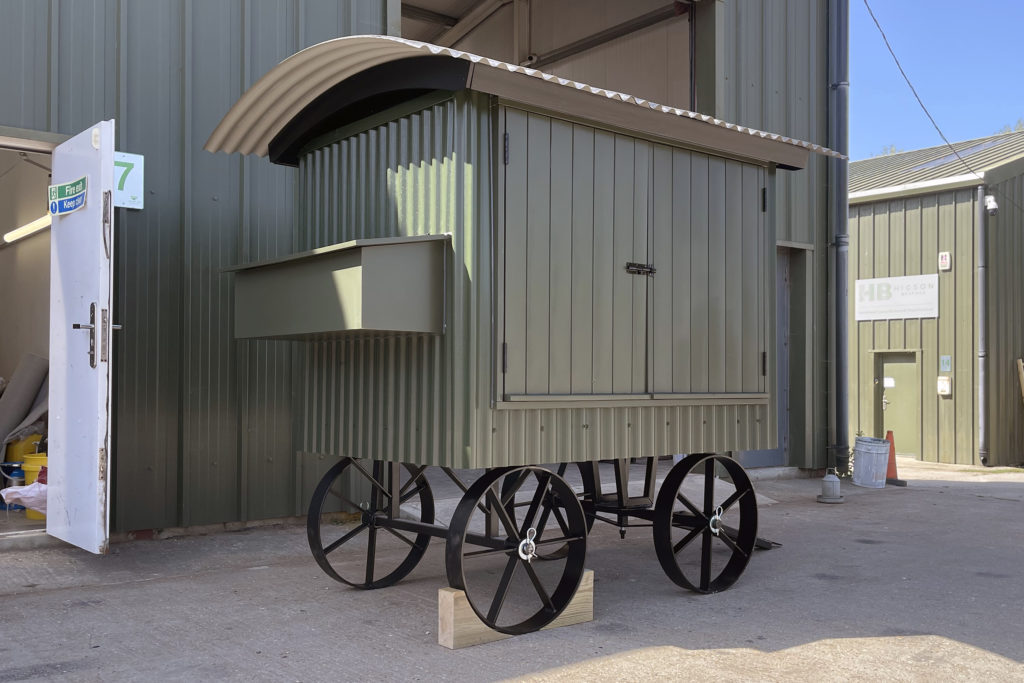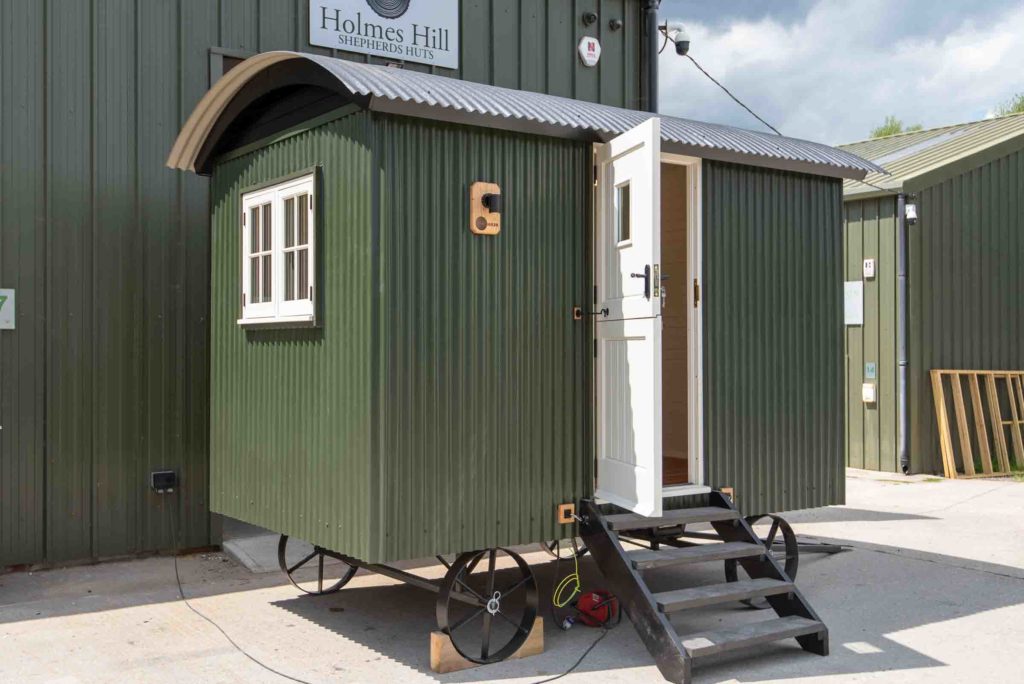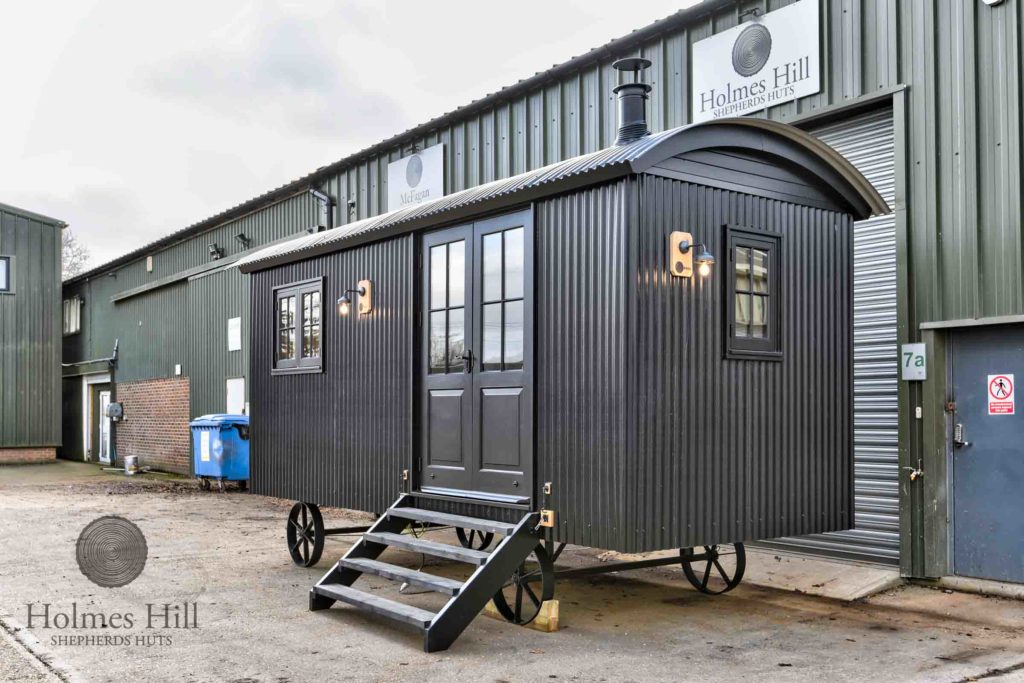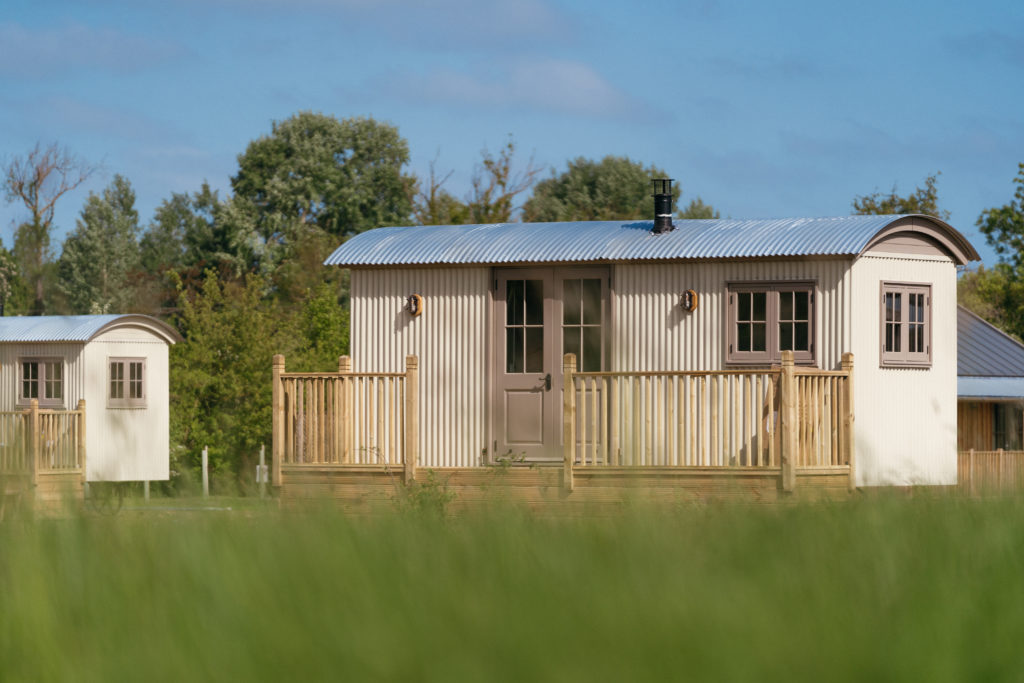The glamping business is going from strength to strength – according to Verified the increasing desire to experience travel and a deeper connection with nature is driving the rapid expansion of the Glamping Market, as tourists seek out unique, immersive lodgings that combine luxury and outdoor adventure. This trend is driven by a desire for adventure combined with a preference for luxury and convenience, enabling the market to grow at a CAGR of 11.1% from 2024 to 2031.
So how do I set up my own Glamping Business?
Well with customers getting more sophisticated and demanding every year, looking for more premium experiences that combine the best of camping with the comforts of a home stay. Shepherds huts, cabins and pods are now the biggest segment of the glamping market, accounting for just over 45 percent of the total stays in 2021, a number that is only set to continue growing as customers look for the highest level of comfort that these more permanent structures can provide.
As a result of the demand, glamping can be a lucrative business. If you get the service offer right, an established, high end glamping businesses can deliver up to 50% earnings and that’s before tax. Most glamping businesses will typically make slightly less than this, nevertheless, with a small amount of effort and a creative imagination they can become very successful additional revenue streams or even businesses.
So the common questions you may have?
- How do you go about setting up a glampsite?
- How much income do they generate?
- What are the costs?
- What are the most common mistakes and pitfalls?
Land & planning permission
Firstly, you’re going to need some land to set up a glamping business, unless you plan to do it from your garden. The most important factor is location. Return business is very important for any holiday rental business, and if you’ve got the perfect location along with the best accommodation, you can help increase the chances of repeat business and positive word of mouth. If you own a farm, is there a meadow, orchard or some trees you can put the glamping site in? And what about noise? A noisy site is very unlikely to get the repeat custom that you need to help build a successful business. And then we have the practical questions too such as, what about the facilities, will people have to walk to them? Is there good road access? Can people drive their cars onto the site? Are there paths to stop people getting muddy. These are all things you have to consider carefully before setting up your business. As we’ve mentioned, people increasingly expect a more premium experience from glamping, so it’s important to be realistic when you’re considering whether your land is right for a glamping business.
If you’re satisfied that you’ve got the right location, then planning is the next consideration. If your glamping business operates for more than 28 days a year you will need to change the land use from temporary to permanent irrespective of any structure that you are using for your glamping site, further planning permission will also be needed if you are installing permanent facilities.
One of the great advantages of a shepherd’s hut is that, unlike permanent structures, they don’t require the additional planning permission. and as a general rule they are looked on relatively favorably by local planning authorities as they are seen as being in keeping with the rural setting of many glampsites, making them easier to get through the planning process than permanent structures.
Why a shepherds hut?
Well, they are part of the largest and fastest growing segment of the market. People increasingly expect more from their glamping experience – wanting better facilities and a more comfortable experience, which a shepherds hut can offer.
Shepherds huts are easy to install, and can easily be moved if you want to reconfigure your glampsite.
Shepherd huts can offer a great point of interest – shepherds huts dressed properly can give a authentic rural feel, and a point of difference over more standard cabins.
Unlike more permanent structures like pods or cabins, shepherd’s huts can be resold if your plans change in the future. There’s thankfully a strong demand for shepherd huts for sale and well-made shepherd’s huts hold their value extremely well. The fact that you can get a large part of your investment back for a shepherd hut helps derisk one of the most significant investments on a glamping site.
Landscaping & facilities
The standard of glampsites rises every year, with landscaping and facilities an important part of this trend. Landscaping and planting can make or break a glampsite, if you’re putting the shepherd’s hut on hard standing, is there any way you can soften the look with some quick growing plants around the border? Some plant pots? Night time, think about a simple trellis or arbor with some nice night lighting can add real ambiance. What about a fire pit outside the hut? Upgrading the facilities, make sure the quality of the facilities match that of accommodation. Add some extra attractions, a wooden hot tub? Or maybe a small play area for children.
Marketing
The best form of marketing is word-of-mouth. However, in the early days of a glamping business it is inevitable that you will have to use different platforms to market and promote your shepherd’s hut. such as Social & Digital Media, a strong social media presence is a must these days. Make sure you have a Facebook business page and an Instagram account as a minimum. Great images are essential for a strong social media presence. It’s entirely possible to do this with a good smartphone these days. Social media posts take time, but is essential as it’s the way many people discover and choose your site now. People often search for glamping on Google Maps, and a good presence with good pictures and good reviews makes a huge difference. Paid Digital Advertising is another form of marketing there’s a lot of competition for Google Adwords for glamping terms. There are then of course more traditional forms of marketing and advertising, like paid ads with magazines though these can be expensive if you’re just starting out, and many customers use digital platforms these days.
Revenues, the return on investment on a glamping business depends on a range of factors. Not least is the price you can charge, which is a function of your location, the level of service you provide and the season. Higher end glampsites in beautiful locations can charge up to £250 per night and more in high season, however, in more mid-range glampsites you can expect to be able to charge £70 per night in low season, £90 per night in mid-season and £120 per night in high season, though again, pricing is very dependent on location, service, and a number of other factors.
A good occupancy rate is the foundation of a successful glamping business. Like almost all businesses, it takes a while to spread the world and build loyalty, and these are the keys to success. If you get your glamping offer right, and people come back and spread the word, you can expect to get to an occupancy rate of somewhere between 60 and 70 percent by Year Three. You should plan for the first couple of years to be lower, depending again on your location and offer. This means that a glamping business should expect to turn over roughly £25,000 pounds per unit based on these average figures after three years. Assuming a reduced turnover in the first year of £15,000 and £20,000 in the second, takes the estimate of gross revenue in three years to £60,000 per unit.
Costs, costs fall into four main areas site preparation and set up, cost of units & facilities, ongoing service costs and maintenance.
Site Preparation, there are a range of costs involved in setting up, and these will depend on your site, so are almost impossible to estimate. However, if you have to run services to the site, that will add cost, as will landscaping, adding hard standing and dressing the site. But remember, the more you offer, and the better the site looks, the more you can charge. There may also be costs associated with planning and any other legal requirements which you need to factor in.
Costs of Units & Facilities, there’s a wide variance in the cost of glamping units, from tents to permanent cabins or pods. One of the main advantages of shepherd’s huts is that they give the quality of experience of permanent structures, with the flexibility of more temporary accommodation like yurts or tents. It’s also important to remember that the huts will all need ‘dressing’ so factor in for bedding, kitchen utensils and any soft furnishing needed for each unit.
Ongoing Service Costs such as energy, water and other bills are a significant cost, and need to be included. Cleaning is also a significant expense / time consideration. Many small glamp site owners do this themselves so there is no external cost, but you have to budget at least a couple of hours for the cleaning and set up of each hut between stays. On top of that there are some small costs for some consumable items such as toilet roll, wood for the wood burner, cleaning products, etc.
Maintenance, like any building, a shepherd’s hut will need some maintenance. Exterior cladding will probably need to be repainted every 6-8 years depending on the product it’s treated with. And then there’s general interior wear and tear which you’d get with any holiday let. Again these costs should be no more than about £150 per hut per year, but should be budgeted for when building your business plan.
Management, managing a glampsite can be a labour intensive business, and it’s important to factor in the time it takes to deal with bookings, cleaning and dealing with customers on a day-to-day basis. This shouldn’t necessarily put you off though, there are now services that will manage your glampsite for you. So if you have the land, and think would be a good for a glampsite, but don’t think you have the time to manage it, don’t worry, there are services that will, for a fee, do just that for you.
In conclusion, the glamping business is an excellent opportunity for people to generate extra income from land that may not be that otherwise productive. It’s important to understand, however, that while the sector is growing quickly, it is also maturing fast, so like any other business opportunity it’s important to go in with your eyes open. Consider what level of service you can offer and what investment that requires. With some careful planning there are ways to make the business easier to run, and a less risky proposition from the outset.

